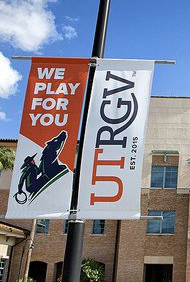"There are many paths to the top of the mountain, but the view is always the same." - Chinese Proverb
Planning for a high-quality program that will be delivered to all candidates is different from planning for a high-quality program that will only be delivered to some candidates. An enabling condition for whichever approach you choose below, is ensuring your faculty hold a commitment to applying programmatic improvements to 100% of the candidates you train and develop. Ultimately, educator preparation programs should first assess their commitment to impacting all candidates through their improvement efforts, and then identify the best approach to scale their program vision.
Choosing a Method of Scale
There are many approaches to scaling up high-quality teacher residencies. As we have supported our coalition member programs to scale, three approaches have emerged as especially effective methods to ultimately reach 100% of program candidates across all aspects of programming; these being: Pilot to Scale, Scaling by Component, or a Hybrid method.
Educator preparation program leaders should choose the approach that best fits their context and needs, taking into consideration variables such as program size and readiness conditions that promote change management.
We recommend choosing between one of the 3 options listed here. In the sections below, you can read more about how these options were applied with other educator preparation programs.
Option 1: Pilot to Scale
Implement all the components of a high quality program within one pathway e.g elementary, then expand to other pathways e.g. secondary programs.
Option 2: Scale by Component
Implement 1 component across all pathways at the same time, then continue with the additional components.
Option 3: Hybrid
Any combination of the other two approaches that meets the specific needs of your context.
Pilot to Scale Method
This approach features a staged implementation in which the high-quality program components are piloted with a smaller set of candidates, with explicit goals and incentives for scaling the pilot model and using lessons learned to improve the model in future implementations. This can be an effective scale method both for programs that are new and for existing programs that are scaling new program components or licensure pathways.
For example, when University of Houston (UH) transitioned from a single semester to full year student teaching experience, it did so with scale in mind. With the goal of requiring a full-year student teaching residency as a graduation requirement for all teacher candidates, UH began with a pilot of one cohort of candidates, and expanded the model each year over a 3- year period until they reached 100% of candidates. Similarly, before Texas Tech University (Texas Tech) implemented and scaled its year-long residency, it reinvented its approach to partnership. Built on the Professional Development School model, Texas Tech introduced a clear, structured model with carefully defined Memorandum of Understanding (MOU) that encouraged data sharing, accountability and understanding of roles and responsibilities, all with an eye towards scaling. This new approach to teacher preparation-district partnership better positioned Texas Tech to implement and scale its residency.
Texas Tech University Case Study
Historically, Texas Tech operated as a traditional educator preparation program that ran independently from local districts. In 2010, Texas Tech implemented a new model of teacher preparation partnership to place and train student teachers in a way that better meets local district needs.
University of Houston Case Study
In its quest to become the strongest institution of higher education in the state, University of Houston (UH) sought to transform its educator preparation program so that more teachers were ready for the classroom on day one. Wanting to provide teacher candidates with deeper hands-on teaching experiences, UH redesigned its educator preparation program and did so with scale in mind. The program transformed its single semester clinical experience to a year-long student teaching residency while also deepening relationships with partner school districts.
Scale By Component Method
An educator preparation program may choose to focus its scaling of its high-quality model by scaling each component individually across program and pathways college-wide. For example, an educator preparation program may seek to scale by piloting one or more new program components with 100% of candidates, and then moving to the next component. Examples of program components include a data driven student teaching course, quarterly governance meetings, practice based coursework, etc. The major difference with component-by-component versus pilot-to-scale is that the program is testing out one aspect of the program at scale versus testing out an entirely new program model with a subset of candidates. The University of Texas-Rio Grande Valley (UTRGV) sought to scale its data system first as a foundation for scaling other transformation components, such as candidate competencies or the clinical experience, believing in a data-driven approach for improvement. For UTRGV, once its data system operates at scale, the data will then inform the nature, direction and speed of scaling other components.
University of Texas, Rio Grande Valley Case Study
A central goal for the University of Texas Rio Grande Valley’s College of Education and P-16 Integration was transitioning from a culture of compliance to a culture of inquiry. Doing so ensures program redesign efforts are based on actionable data leading to program improvement. The transition necessitated scaling the college’s data system with the infusion of four processes: (1) developing new and strengthening existing partnerships within and beyond the college and institution; (2) engaging faculty in reviewing program data and taking part in substantive discussion on what the data reveal; (3) identifying data necessary to meet state and accreditation requirements and determining program specific questions that may better support redesign efforts; and (4) conceptualizing a way to centralize data and make it available as close to real time as possible.
Hybrid Method
Another approach to consider is both ‘Pilot to Scale’ and ‘Scale by Component’ models. Your program might choose to, with a pilot group of candidates and faculty, pilot all of the transformed components of your high-quality model while at the same time choosing one of the components to focus on college-wide (across all programs and pathways). Doing so allows the program to measure the effectiveness of the transformed model, observe and understand how the components interact and influence one another, while also ensuring socialization of the transformation goals across the entirety of the program. Having all faculty focus on one component only in the first year may feel more feasible. The key is to provide a ‘roadmap’ or long-term plan to faculty and staff for how the other components will be transformed over time, as well.
Critical Factors
Regardless of which method you choose there are a number of other critical factors that may be helpful for an educator preparation program to consider before scaling. Click on the factors below to learn more about how they can enable or hinder your program’s ability to scale effectively.
Pause and Process
Pause and Process
At the end of each section of the US PREP Scale Toolkit we will ask a few brief questions for you to consider on your journey. Once you have completed all the Pause and Process Sections, we will send you your answers via email so you can see your results.
We encourage you to keep your results and share them with your US PREP scaling partner.








